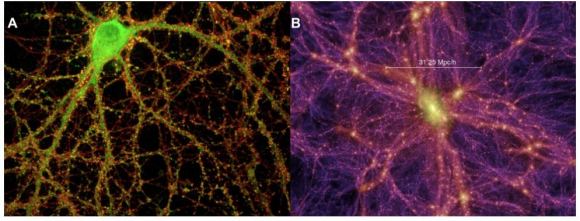As two neutron stars spiral in towards each other a pair of spiral gravitational
waves are generated warping the spacetime fabric of our verse. At the epicentre of the
spiral waves the two neutron stars collide in an event called a kilonova. This
rotational collision gives birth to an entrapped manifold of spacetime called
a black hole. A rotational black hole to be precise and by following Penrose’s conformal
solution it leads to a pair of entrapped manifolds each a new universe in its own right.
This signature of this the Big Bang Kilonova event we can clearly see in both
WMAP and
Planck’s
data of the microwave sky.
Picture a balloon inflating inside a room. So it is with our universe! Our universe and
its CPT-symmetric parallel anti-verse are like
balloons, or rather entrapped manifolds, inflating inside the room. The room
itself is an entrapped manifold whose proportion of scale is far greater than our own.
As self-similar patterns repeat irrespective of scale we can image this room being an
exact copy of our universe. Or rather, our universe, is given form by our parent universe
into whose expanse our universe is expanding. This the Superverse warps the
shape of our early universe leading to the imprint of the gravitational waves upon the
microwave sky.
But after the Big Bang Kilonova the source of the gravitational waves is gone leaving
our universe to expand into the vacuum of the Superverse. The spacetime curvature of
vacuum is flat and so we observe a universe that is itself flat. For the same reason,
in that our universe is warped by the spacetime curvature of our parent universe,
we are able to explain both the large scale anisotropies and the observation
that our universe has a flat spacetime
curvature using the same explanation.

